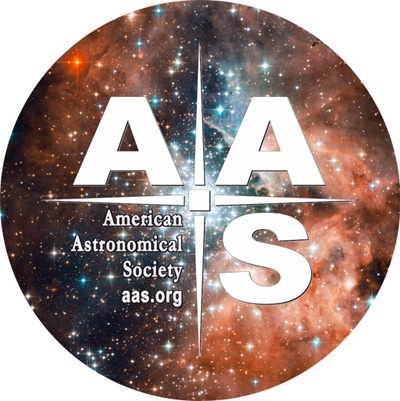17 July 2020
Susanna Kohler

Artist’s impression of the dusty circumstellar disk surrounding UX Tauri A. A new study has discovered that this disk is being perturbed by the fly-by of another star in the UX Tauri system. [NASA/JPL/Caltech]
The gaseous, dusty disks surrounding newly born stars can reveal a wealth of information about how distant stellar systems form and evolve. In a new study, scientists have now watched the interaction of two such disks in a stellar flyby.
Spotting Spirals
In the past decade, new instrumentation has led to a dramatic improvement in our views of circumstellar environments. We’ve spotted remarkable structure in the dusty disks that surround newborn stars — including, in many cases, pronounced spiral arms.
The gaseous, dusty disks surrounding newly born stars can reveal a wealth of information about how distant stellar systems form and evolve. In a new study, scientists have now watched the interaction of two such disks in a stellar flyby.
Spotting Spirals
In the past decade, new instrumentation has led to a dramatic improvement in our views of circumstellar environments. We’ve spotted remarkable structure in the dusty disks that surround newborn stars — including, in many cases, pronounced spiral arms.
The presence of these spiral arms has provoked much discussion and debate. Are they caused by gravitational instabilities in the gas and dust? Or are they produced by perturbations from unseen, newborn planets orbiting within the disks? While both of these explanations could be at play in different systems, there’s an additional possibility to consider: the arms could be excited by tidal interactions with another star.
In a new study led by Luis Zapata (UNAM Radio Astronomy and Astrophysics Institute, Mexico), a team of scientists has used the sensitive and high-angular-resolution observations of the Atacama Large Millimeter/submillimeter Array (ALMA), located in Chile, to understand how tidal interactions with an orbiting star might be responsible for spiral arms observed in UX Tauri.
A New Disk Found
Located ~450 light-years away, the UX Tauri system consists of four stars: UX Tau A (the main star), UX Tau B (a binary star), and UX Tau C (a close companion that lies just to UX Tau A’s south). Past observations have revealed a disk of gas and dust around UX Tau A exhibiting distinct spiral arms.
Zapata and collaborators have now followed up with detailed ALMA observations to explore the structure of the molecular gas and dust in UX Tau. In addition to further resolving the disk around UX Tau A, the team was also able to detect — for the first time — molecular gas swirling in a disk around UX Tau C. What’s more, the observations reveal tidal interactions between the two disks that surround these stars.
Drama in UX Tau
What do these findings mean? Zapata and collaborators suggest that we’re witnessing a close flyby of UX Tau C as it progresses on a wide, evolving, and eccentric orbit around the disk of UX Tau A. As UX Tau C plowed through UX Tau A’s circumstellar disk, it captured some of the gas, forming its own disk. Through its motion and this tidal interaction, UX Tau C also excited the observed spiral arms in UX Tau A’s disk.
The drama spotted in UX Tauri represents one of the few cases of binary disk interactions that have been mapped out in molecular gas — but this is likely a common occurrence, since stars often occur in multiple-star systems. Sensitive observations like the ALMA detections presented here will likely reveal more such interactions in the future, shining additional light on the process of star and planet formation.
Citation
“Tidal Interaction between the UX Tauri A/C Disk System Revealed by ALMA,” Luis A. Zapata et al 2020 ApJ 896 132.
https://iopscience.iop.org/article/10.3847/1538-4357/ab8fac
See the full article here .
I am in the hospital and for some reason I cannot copy images.

five-ways-keep-your-child-safe-school-shootings
Please help promote STEM in your local schools.

AAS Mission and Vision Statement
The mission of the American Astronomical Society is to enhance and share humanity’s scientific understanding of the Universe.
The Society, through its publications, disseminates and archives the results of astronomical research. The Society also communicates and explains our understanding of the universe to the public.
The Society facilitates and strengthens the interactions among members through professional meetings and other means. The Society supports member divisions representing specialized research and astronomical interests.
The Society represents the goals of its community of members to the nation and the world. The Society also works with other scientific and educational societies to promote the advancement of science.
The Society, through its members, trains, mentors and supports the next generation of astronomers. The Society supports and promotes increased participation of historically underrepresented groups in astronomy.
The Society assists its members to develop their skills in the fields of education and public outreach at all levels. The Society promotes broad interest in astronomy, which enhances science literacy and leads many to careers in science and engineering.
Adopted June 7, 2009
